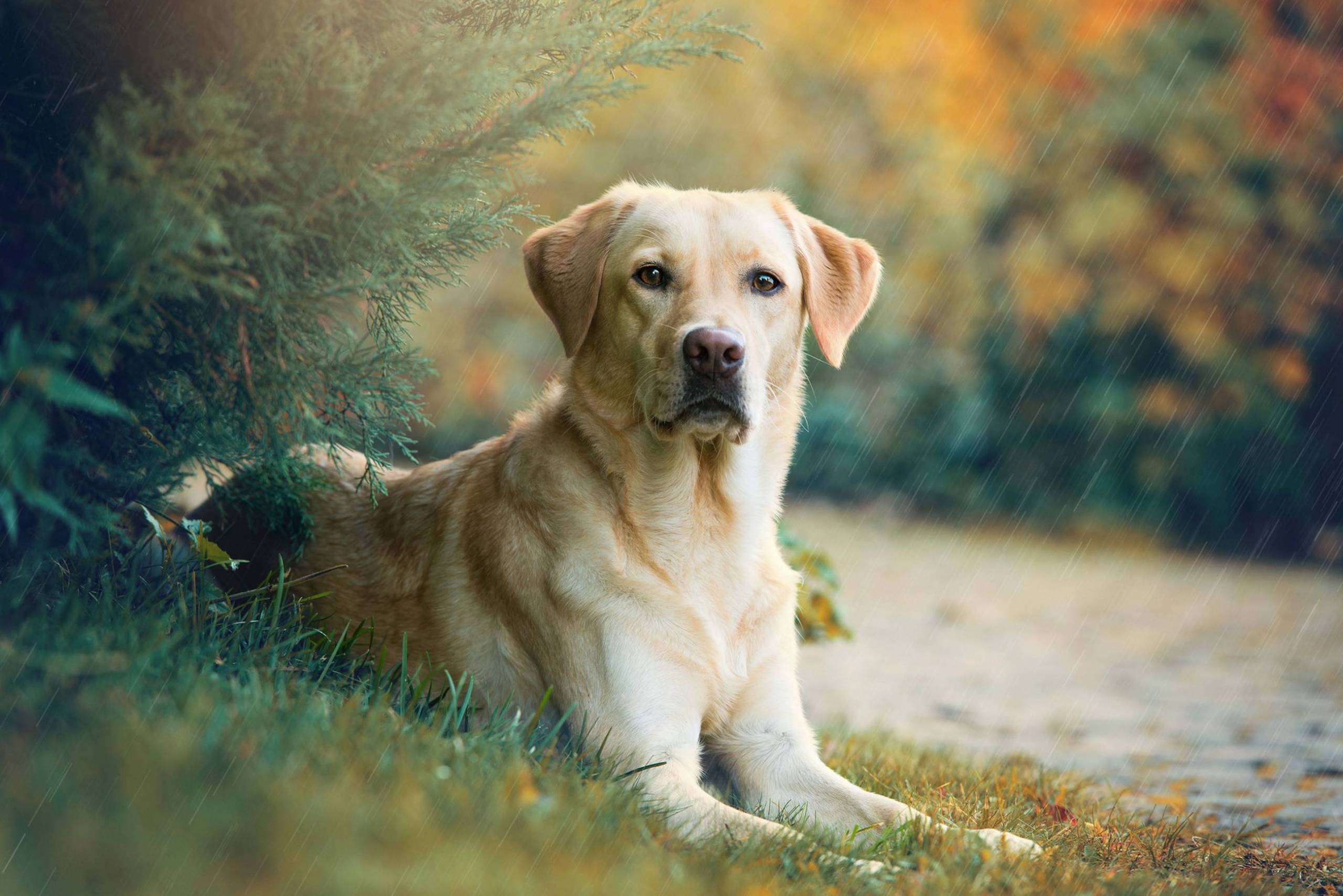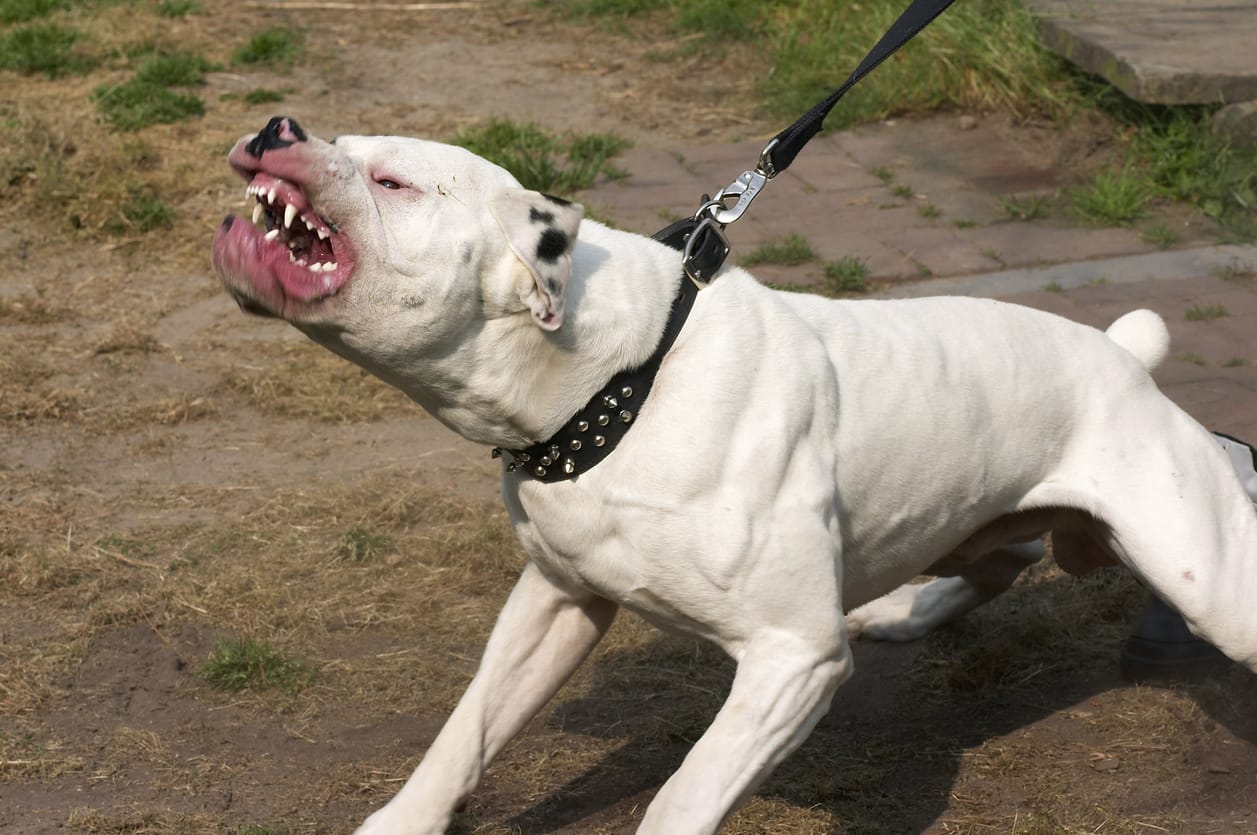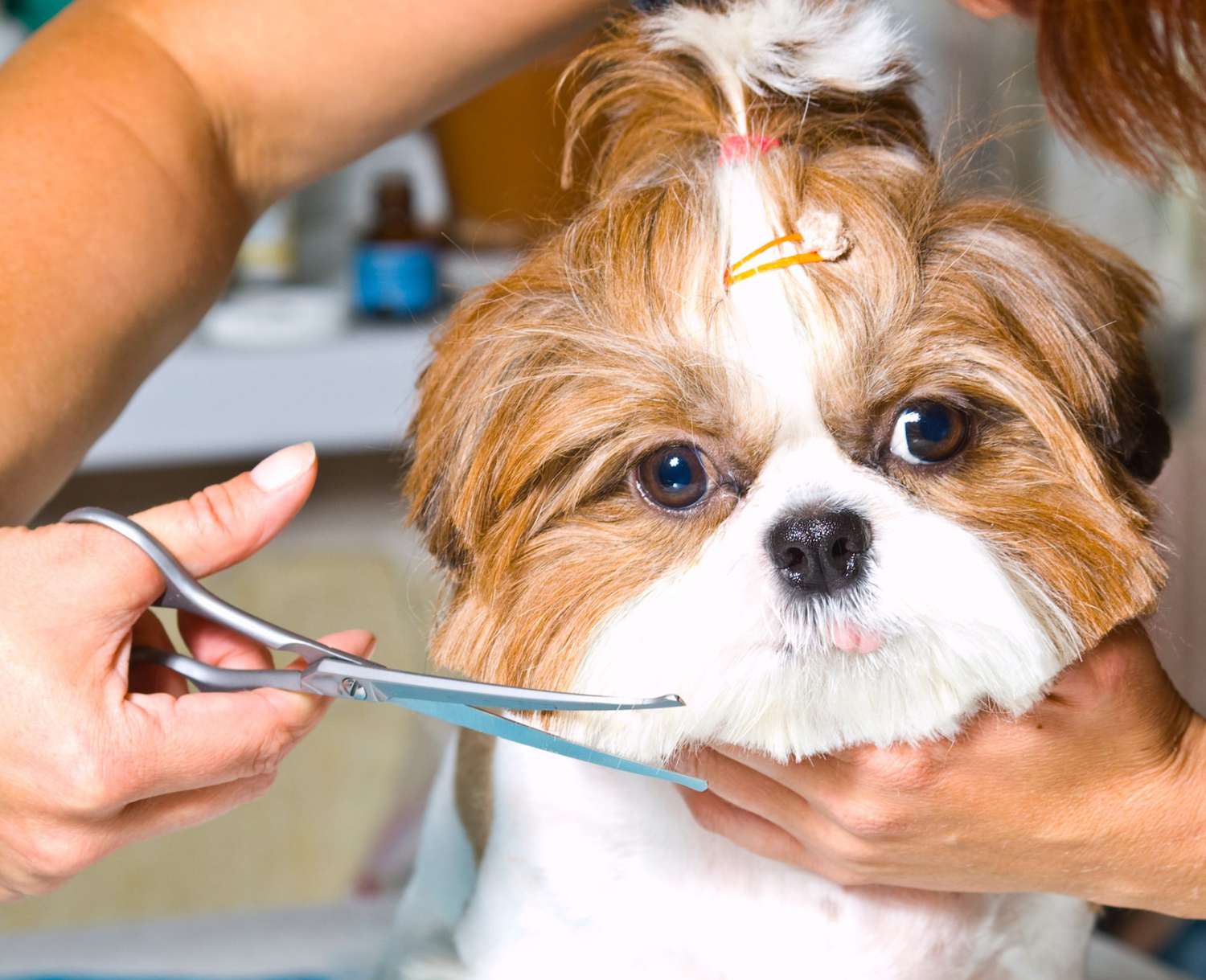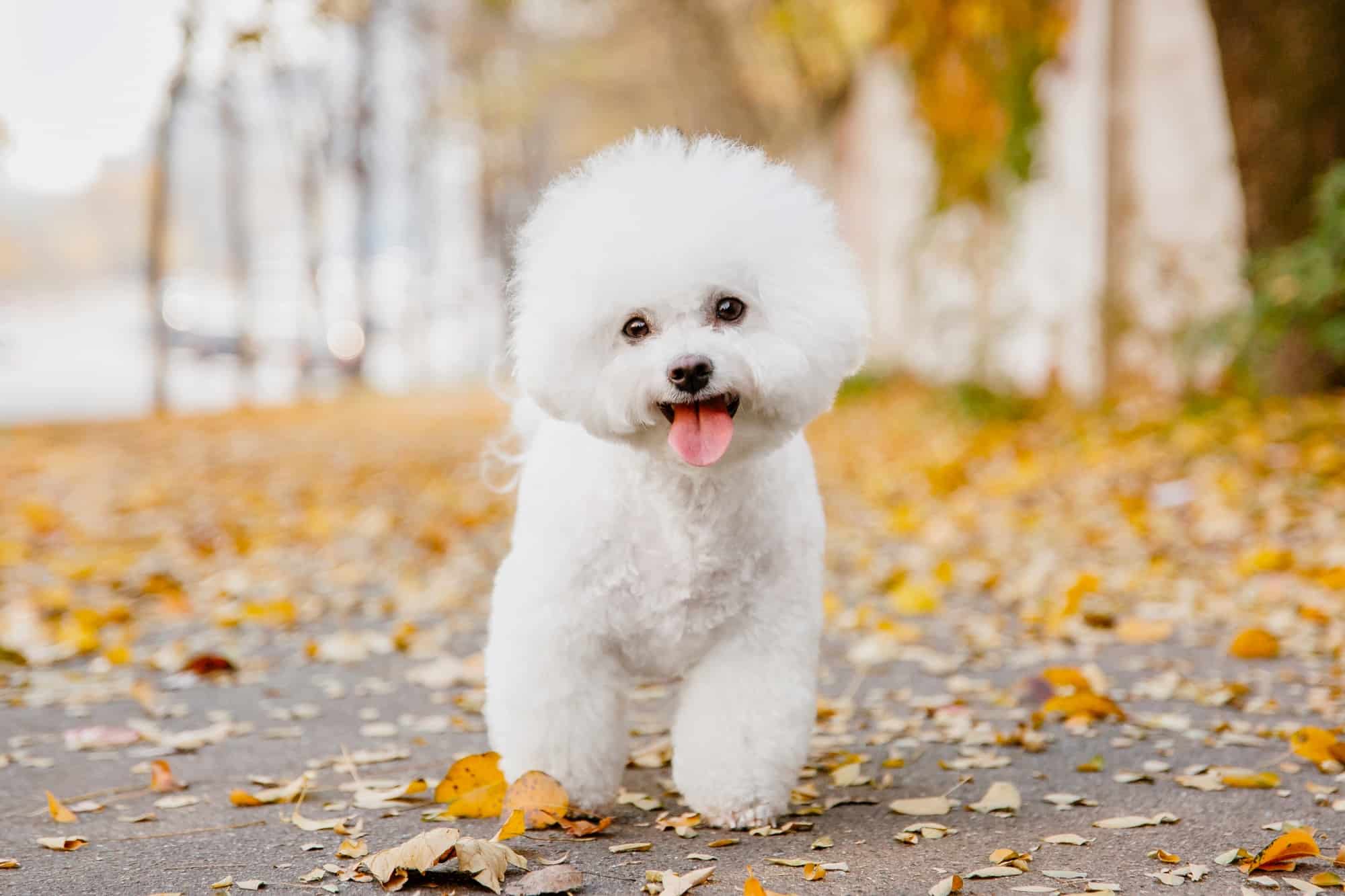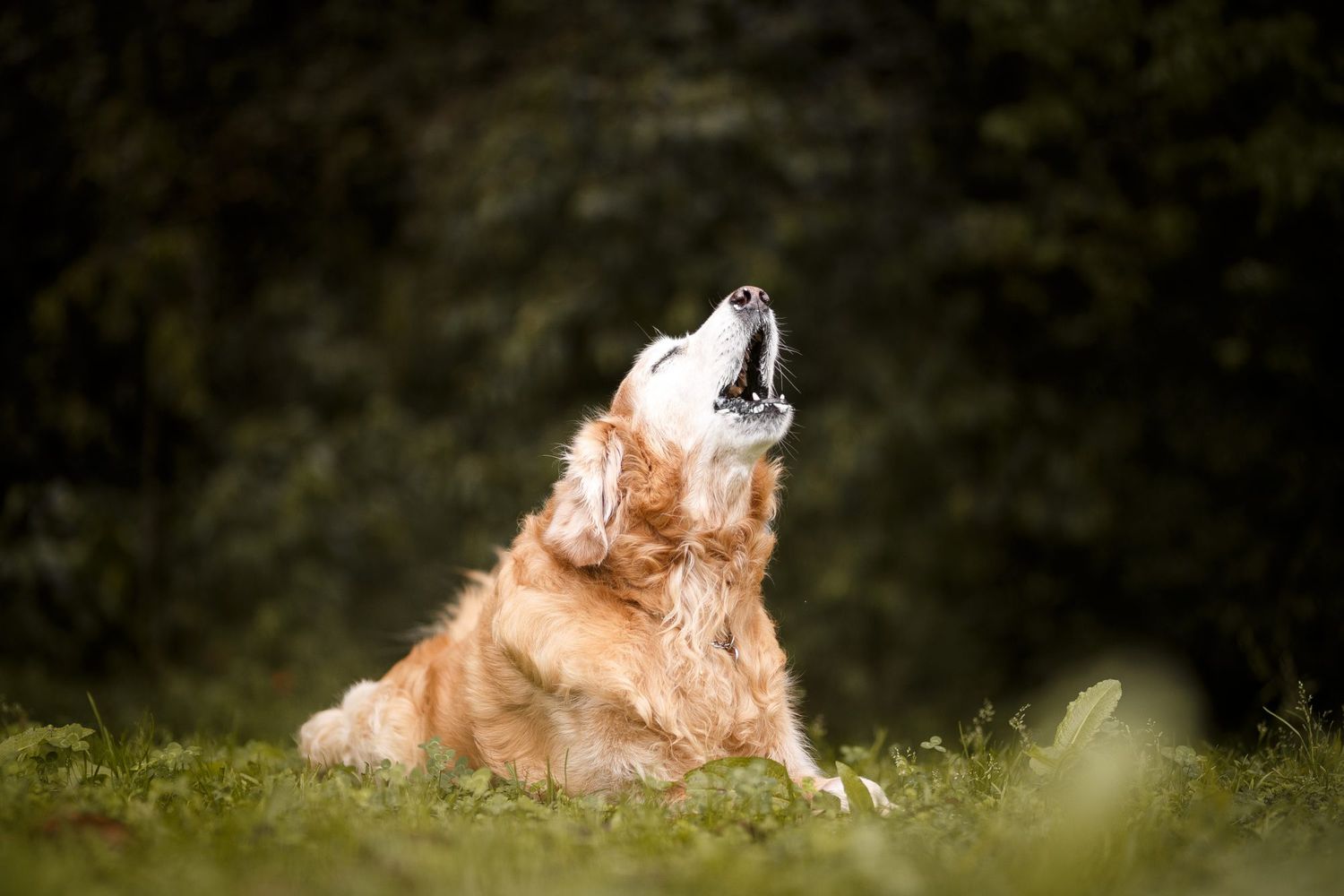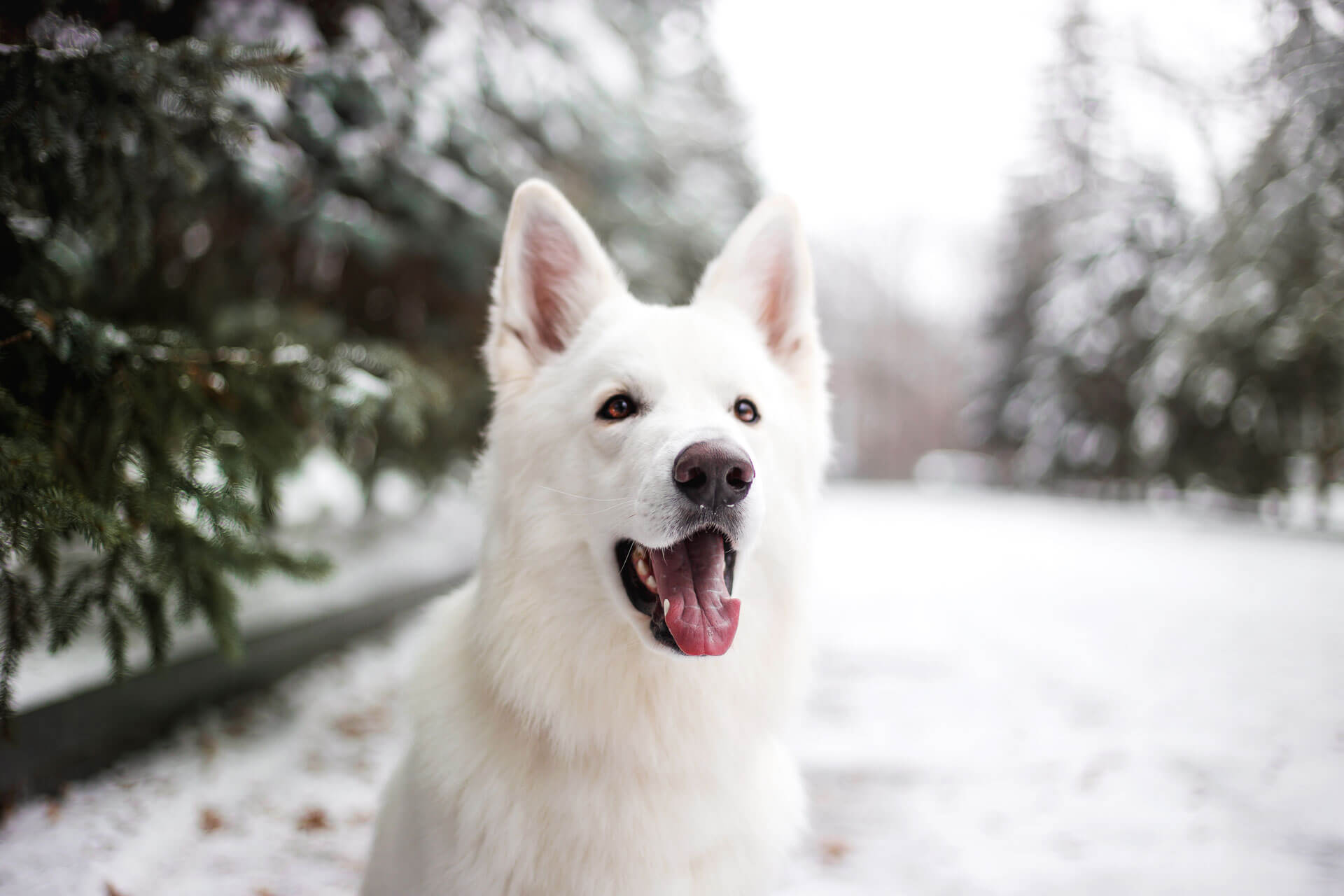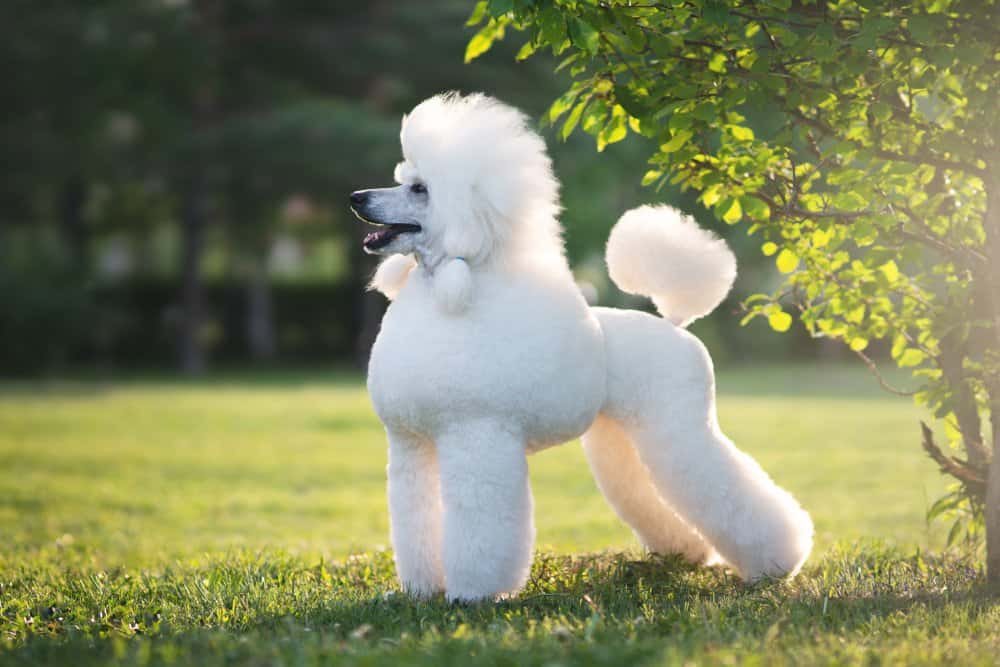Africa is home to a diverse range of dog breeds that have adapted to the continent’s hot climate and developed intense hunting and guarding instincts. These energetic working dogs tend to bond well with their people and have established a reliance on each other.
From the barkless Basenji to the huge Boerboel, the variety of African dog breeds may surprise you. In this article, we will explore 10 types of African dog breeds, their unique characteristics, and their history.
You are reading: 10 Types Of African Dog Breeds
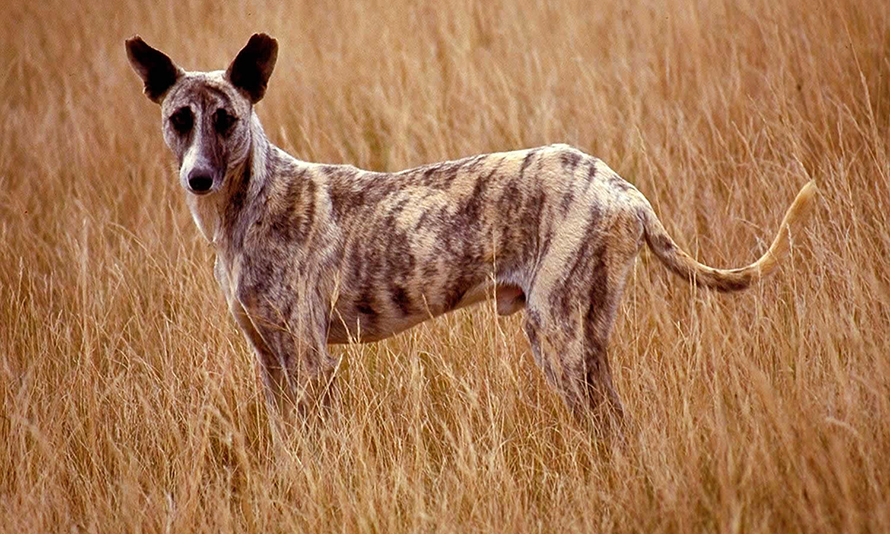
10 Types Of African Dog Breeds
Basenji
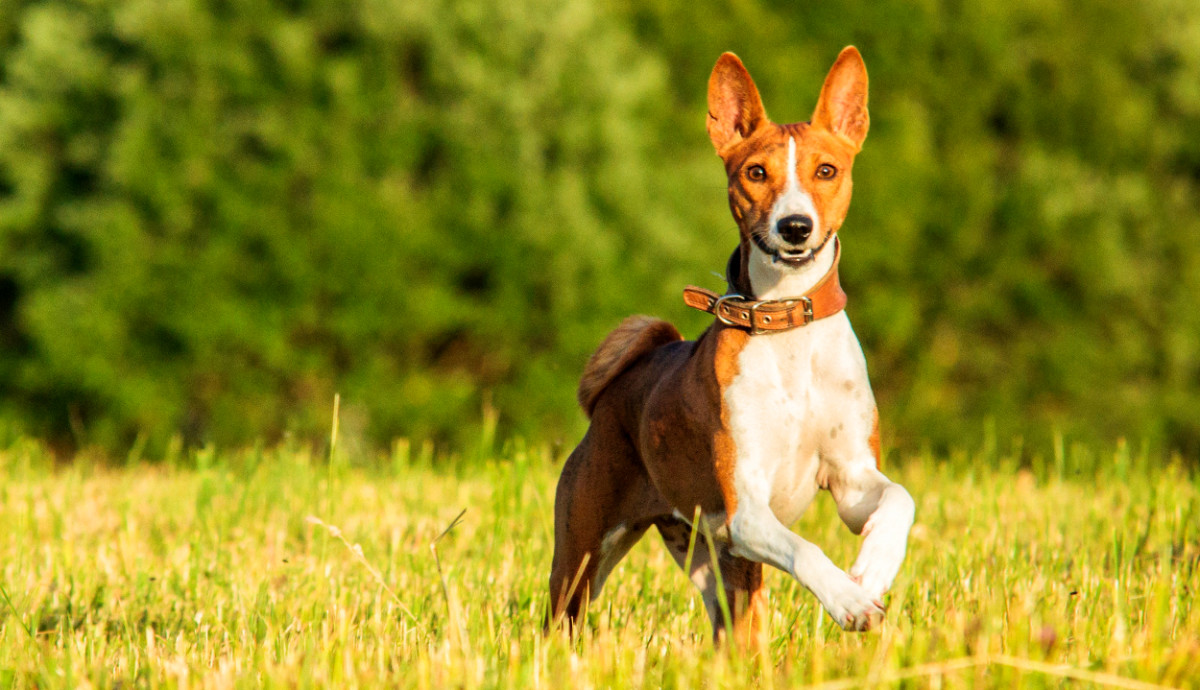
The Basenji is a breed of hunting dog that originated in central Africa. It is known for its unique yodel-like sound, which is due to its larynx being shaped differently than other dogs.
Basenjis are small to medium-sized dogs with short, smooth coats that can be red, black, black and tan, or brindle with white markings. They have erect ears, tightly curled tails, and graceful necks.
Basenjis are intelligent, alert, and highly independent dogs that require creative and patient handling to bring out their best qualities. They are affectionate with their families but can be reserved with strangers.
Basenjis are not easy to train and tend to be aloof dogs. They are usually good with other dogs if socialized while young, but some can be argumentative with other Basenjis.
Basenjis are active dogs that require daily exercise and can be chewers and diggers if left to their own devices. They are not recommended for households with small pets like cats or rodents, as they tend to chase smaller animals.
Boerboel
The Boerboel is a large and muscular dog breed that originated in South Africa. They were originally bred for guarding and protecting farms, and they are known for their loyalty, intelligence, and protectiveness.
Boerboels are not recommended for novice dog owners, as they require experienced handling due to their size and strength. They are affectionate with their families but can be wary of strangers and other dogs.
Boerboels require at least two hours of exercise per day and early socialization and training to bring out their best qualities. They are generally healthy but can be prone to some health problems, such as hip dysplasia, elbow dysplasia, and heart disease.
Boerboels are best suited for experienced and active pet parents with a lot of land where the pup can run around. They do well with kids in their family and are best as your only dog.
Rhodesian Ridgeback
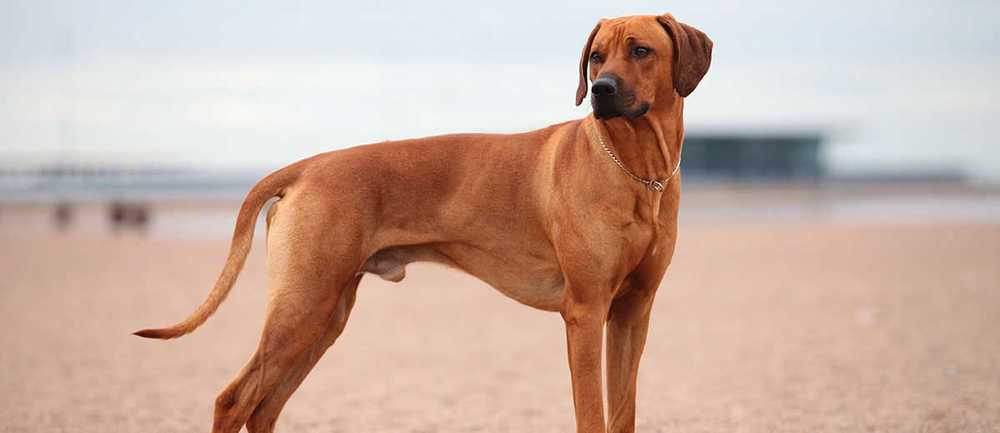
The Rhodesian Ridgeback is a large dog breed that originated in Southern Africa. They were originally bred to hunt large game, including lions, and were known for their skill at tracking and baying but never killing lions.
Read more : How Long After Applying Frontline, Can I Pet My Dog?
The breed is named for the distinctive ridge of hair that runs down their back, which consists of a line of hair that grows in the opposite direction.
Rhodesian Ridgebacks are large, muscular dogs with a balanced and athletic build. They have a short, dense coat that comes in various shades of wheaten color, ranging from light to red.
The breed is intelligent, loyal, and courageous, making them excellent guard dogs and family pets. They require early socialization and training to bring out their best qualities and are best suited for experienced pet parents who can provide them with plenty of exercise and attention.
The Rhodesian Ridgeback Club of the United States is the official breed club for this dog breed in the US.
Africanis
The Africanis is a dog landrace found across southern Africa. It is a medium-sized, lightly built dog with a long slender muzzle and usually a short coat.
The Africanis has almost always been attached to human settlements in southern Africa, where it has been used to help herd sheep, goats, and cattle, guard against predators, and help their human companions in the hunt.
The Africanis has been known by a number of names, including the Bantu dog, mūtina dog, Khoekhoe dog, Xhosa dog, Tswana dog, Zulu Dog, Katali, and Mukehe.
The Africanis is very loyal, courageous, and playful with tremendous stamina. It is good with kids and very social. The Africanis is the original dog of Africa, and it is part of Africa’s unique heritage. It is a distinct breed endemic to southern Africa, and it has a proven lineage going back at least 7,000 years.
The Africanis is the result of natural selection and physical and mental adaptation to environmental conditions. It has not been “selected” or “bred” for appearance, and unlike Western breeds, the Africanis does not have a rigidly uniform appearance, although common traits define the breed.
Sloughi
The Sloughi, also known as the Arabian Greyhound, is an ancient breed of domesticated dog that belongs to the sighthound family. It originates from North Africa and is found in Algeria, Tunisia, Morocco, and Libya. Here are some characteristics and facts about the Sloughi:
Appearance:
– Medium-to-large hound breed
– Long legs and slim build
– Short fur
– Comes in various shades of wheaten color, ranging from light to red
– Similar in appearance to the Greyhound
Temperament:
– Reserved and independent yet affectionate with their families
– Regally aloof with strangers
– Loyal to their owners and especially love being around children
– Active breed that requires daily exercise
History:
– The Sloughi has existed for centuries in North Africa, primarily in Algeria, Morocco, and Tunisia, but also into parts of Western Sahara, Mali, Libya, and Egypt
– The word “sloughi” is likely a Berber pronunciation of the Arabic “saluki,” the similarly-looking and -behaving Arabian sighthound; the two breeds likely share a common ancestor
– The Sloughi is a primitive hunting breed that was developed by the Berbers of North Africa to hunt game such as hare, fox, jackal, gazelle, antelope, sand grouse, and other smaller- to medium-sized animals
Grooming:
– The Sloughi’s coat is very short with no undercoat, and it has no “doggy odor” unless it’s wet
– Dirt and mud falls off by itself when the fur dries
– Because it is a desert hound, the Sloughi needs protection in cold and wet weather
– Grooming is easy; a rubber brush or grooming glove will remove dead hairs
Health:
– The Sloughi is generally a healthy breed, but can be prone to some health problems, such as hip dysplasia and eye problems
Overall, the Sloughi is a reserved and graceful hunting dog that requires daily exercise and early socialization and training to bring out its best qualities. It is a loyal and affectionate breed that is best suited for experienced pet parents who can provide them with plenty of exercise and attention.
Azawakh
The Azawakh is a breed of sighthound originating from West Africa, specifically from the countries of Mali, Niger, and Burkina Faso. They are tall and elegant dogs that are known for their impressive speed and agility. Here are some characteristics and facts about the Azawakh:
Appearance:
– Medium-sized, but tall and slender build
– Short, fine coat that comes in any color or color combinations, including red, clear sand to fawn, brindled, parti-color (which may be predominantly white), blue, black, and brown
– Thin skin that clings tightly to its body
Temperament:
– Intelligent, gentle, playful, and unwaveringly loyal
– Reserved around strangers and not fond of being touched by unfamiliar people
– Protective of their loved ones and property
– Can be good with other dogs, cats, children, and strangers if well socialized and trained
History:
– The Azawakh is an ancient breed that was first bred primarily to guard the livestock of nomadic pastoralist owners, particularly the Tuareg people
– The breed was also highly regarded for its companionship and hunting skills, and often worked in packs
– The Azawakh’s breeding means it’s well adapted to living in the harsh desert climes
– The breed’s name comes from the Azawakh Valley which lies in the desert between Mali and Niger, and it translates to “Land of the North”
Grooming:
– Grooming is easy; a rubber brush or grooming glove will remove dead hairs
Health:
– The Azawakh is generally a healthy breed, but can be prone to some health problems, such as hip dysplasia and eye problems
Overall, the Azawakh is a breed known for its unique and captivating personality. They are dignified, independent, and aloof, which can sometimes make them appear reserved or standoffish towards strangers.
However, they are deeply loyal and affectionate with their families and those they trust. The Azawakh is best suited for experienced pet parents who can provide them with plenty of exercise and attention.
Coton de Tulear
The Coton de Tulear is a small dog breed that originated in Madagascar. Here are some characteristics and facts about the Coton de Tulear:
Appearance:
– Small dog breed with a distinctive cottony coat that is soft and dense
– Comes in various colors, including white, white with lemon, white with shades of brown, white with black, white with gray, or tri-colored
– Expressive, round eyes and a black nose
Temperament:
– Friendly, affectionate, and playful nature
– Joyful and sociable dogs that get along well with children and other pets
– Clownish behavior that can provide a lot of entertainment
– Happy, easy-going, and lovable
– Slightly wary of strangers but not aggressive
History:
– The Coton de Tulear is believed to have originated in Madagascar and is related to the Bichon Frise and the Maltese
– The breed was never bred to be anything but a companion, and to this day, that’s what they do best
– The breed’s name comes from the city of Tulear in Madagascar and the French word “coton,” which means cotton
Grooming:
– Grooming is important for the Coton de Tulear due to their cottony coat
– Regular brushing and grooming is necessary to prevent matting and tangling
Health:
– The Coton de Tulear is generally a healthy breed, but can be prone to some health problems, such as hip dysplasia and eye problems
Read more : Why Does My Dog Act Like A Cat?
Overall, the Coton de Tulear is a friendly and playful breed that is well-suited for families with children and other pets. They are easy-going and adaptable dogs that make great companions.
The breed requires regular grooming to maintain their distinctive coat, but otherwise, they are relatively low-maintenance. The Coton de Tulear is a healthy breed that can live up to 16 years.
African Wild Dog
The African Wild Dog, also known as the Cape Hunting Dog or Painted Dog, is one of the world’s most endangered mammals. Here are some characteristics and facts about the African Wild Dog:
Appearance:
– Irregular, mottled coat with patches of red, black, brown, white, and yellow fur
– Large, rounded ears and a bushy tail with a white tip
– Long legs and a muscular build
Temperament:
– Incredibly social animals that form strong bonds within their pack
– Devoted to the friendship and camaraderie of their pack members
– Highly intelligent and communicate effectively with each other
– Can be aggressive towards other dogs and animals outside of their pack
History:
– The African Wild Dog is a cooperative hunter that lives in packs of six to 20 animals
– They hunt a wide variety of prey, including antelopes, warthogs, wildebeest calves, rats, and birds
– African Wild Dogs have a success rate of around 80% when hunting, which is higher than other predators like lions and leopards
– The African Wild Dog is found in 10 African countries, including Malawi, Mozambique, Namibia, Niger, Senegal, South Africa, South Sudan, Tanzania, Zambia, and Zimbabwe
Grooming:
– The African Wild Dog has a short, smooth coat that requires little grooming
Health:
– The African Wild Dog is an endangered species and faces threats from habitat loss, disease, and human-wildlife conflict
Overall, the African Wild Dog is a fascinating and unique animal that is highly social and intelligent. They are skilled hunters that work together to capture prey and form strong bonds within their pack.
However, they are also an endangered species and face many threats to their survival. Conservation efforts are underway to protect this incredible animal and ensure its survival for future generations.
Boer Dog
The Boer Dog is a breed that is not widely recognized and is not to be confused with the Boerboel. Here is some information about the Boer Dog that can be gathered from the search results:
History:
– The Boer Dog is believed to have originated in South Africa
– It is not clear what breeds were used to create the Boer Dog, but it is believed to be a cross between various dogs, including the Mastiff, Bulldog, and other breeds
– The Boer Dog was used by the Boers, who were Dutch settlers in South Africa, as a guard dog and for hunting
Appearance:
– The Boer Dog is described as a peculiar species of Mastiff with a touch of the Bulldog
– There is not much information available about the appearance of the Boer Dog, but it is likely that it was a large and muscular breed
Health:
– There is no information available about the health of the Boer Dog in the search results
Overall, the Boer Dog is a breed that is not widely recognized and has a limited history. It is believed to have been used as a guard dog and for hunting by the Boers in South Africa. There is not much information available about the appearance or health of the breed.
Aidi
The Aidi is a breed of dog that originated in the Atlas Mountains of North Africa. Here are some characteristics and facts about the Aidi:
Appearance:
– Lean and muscular build
– Coarse, thick, weather-resistant coat that is heavy and soft
– Coat colors range from light to dark dun, which can also be brindle
– Tapered muzzle with a black or brown nose that usually matches the coat
– Standing 52–62 cm (20–24 in) in height and weighing around 55 pounds (25 kg)
Temperament:
– Courageous and protective instincts
– Exceptional watchdog that has kept herds of sheep and goats safe for many centuries throughout Northern Africa
– Sensitive and independent breed that requires an experienced owner who uses firm and consistent training
– Affectionate and loyal
History:
– The Aidi is a Berber dog breed native to the Atlas Mountains of North Africa
– The breed has been used as a livestock guardian, protecting herds of sheep and goats
– Recently, the Aidi has become established as a family pet, particularly in rural homes where they can keep active with plenty of access to the outdoors
Grooming:
– Grooming is important for the Aidi due to their thick, weather-resistant coat
– Regular brushing and grooming is necessary to prevent matting and tangling
Health:
– The Aidi is generally a healthy breed, but can be prone to some health problems, such as hip dysplasia and eye problems
Overall, the Aidi is a courageous and protective breed that has been used for centuries to guard livestock in North Africa. They are affectionate and loyal dogs that require an experienced owner who can provide firm and consistent training. The Aidi is a healthy breed that can live up to 12 years.
FAQS
1. What are some unique characteristics of African dog breeds?
African dogs have adapted to the continent’s hot climate with short coats and lean bodies. They’re energetic working dogs that have developed intense hunting and guarding instincts. They also tend to bond well with their people and have established a reliance on each other.
2. What are some popular African dog breeds?
Some popular African dog breeds include the Basenji, Boerboel, Rhodesian Ridgeback, Sloughi, Azawakh, Coton de Tulear, and Africanis.
3. What is the history of African dog breeds?
African dog breeds have been around for centuries and were originally bred for hunting, guarding, and herding. They have adapted to the harsh environments of Africa and have become an integral part of the continent’s culture.
4. Are African dog breeds good with children?
Many African dog breeds are good with children, but it’s important to socialize them early and supervise interactions to ensure safety.
5. Do African dog breeds require a lot of exercise?
Yes, many African dog breeds are active and require daily exercise to stay healthy and happy.
6. Are African dog breeds prone to any health problems?
Like all dog breeds, African dog breeds can be prone to certain health problems, such as hip dysplasia and eye problems. It’s important to research the specific breed and talk to a veterinarian to understand any potential health issues.
Source: https://petstutorial.com
Category: DOGS


